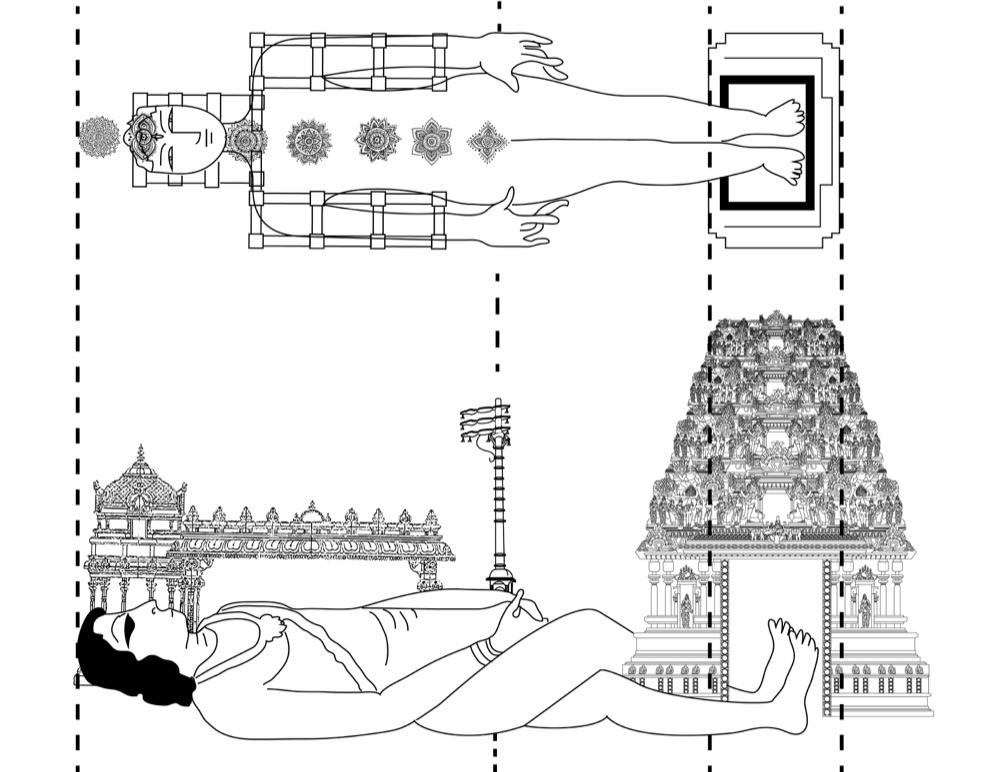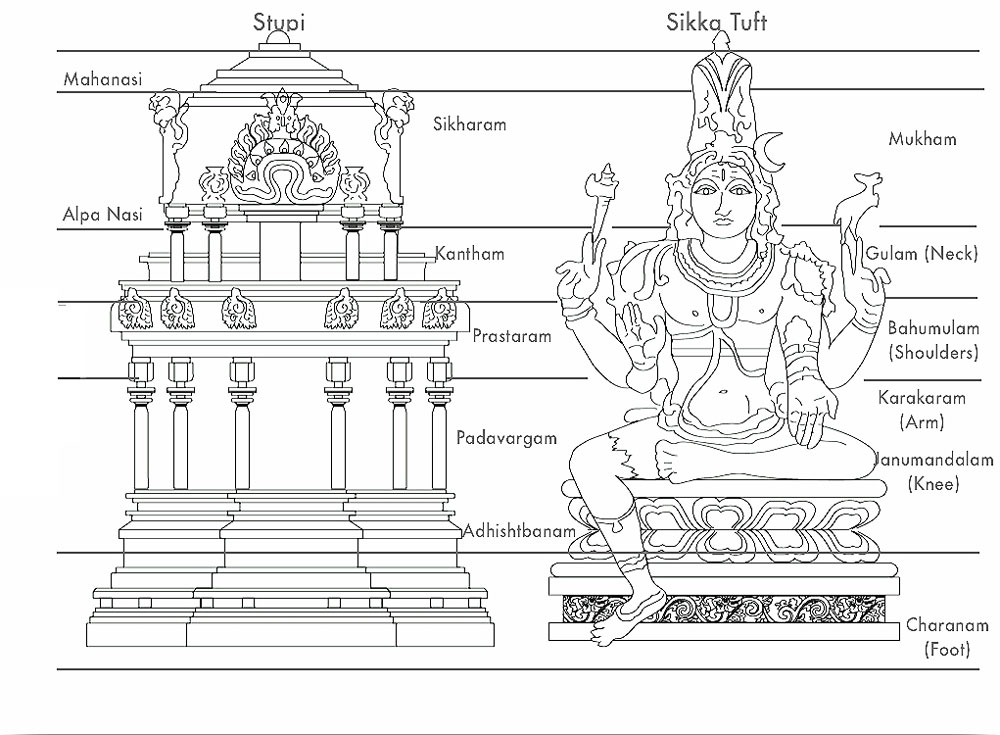Abstraction, Symbolism & Spirituality
Notes, thoughts, ideas on the nature of art & expression
Introduction
This work shall examine the modalities and evolution of art looking to clarify the relationship of abstraction to realism, the use of symbolism in abstraction as a product of spirituality; as well as the modern use of metaphor as a contextual parameter for direct meaning in contemporary art. I hope to draw correlations that will help students and laymen grasp an understanding of the enormous power and heritage found throughout art and its history.
Neolithic Paleolithic
The works considered to fall under Paleolithic periods is circa 32,000-11,000 years ago. Works first marking this time are typically known as cave paintings this also applied to objects found in or nearby these caves. Such as bone or antler typically carved with patterns or what are considered to be decorative motifs. I have looked to this period many times for many reasons, mostly to examine the first evolution of aesthetics and to ask some of the following questions along with others:
- 1. What drove the need to create objects painted or carved?
- 2. Was there rudimentary language through symbols that were understood by most at the time?
By looking at the need for early man to document day-to-day existence, we see the emergence of ritual as the first manifestation of expression. These first manifestations were based upon the relationship of man to his natural environment. It becomes easier to see modern civilization’s relationship to this early understanding and subsequently understand its reciprocal admiration of this period. It is from these first early observations that we may begin to answer some of the questions listed above. I believe that the inhabitants living in the area of this time including Mesolithic, Neolithic with of course some variations, saw the use of marking there tools with symbols and inscriptions as a way of tribal identification or territorial marker. The symbols inscribed on tools found nearby these areas would signify to others that the territory had been marked. And by using the same inscriptions throughout the caves or objects let neighboring tribes see the extent of area or territory covered.
Once purpose was established in the marking of objects I believe associations of those markings started to acquire meaning for the individuals making the objects and the representation of how the markings where made also began to take on layers of meaning. What is in man that he feels the need to create? We first need to look to nature’s role in relation to man in this time frame so that we may ascertain meaning if any, and begin to identify key elements those relationships appear to manifest. As with some artist today who explore the relationship of nature to materials and concept through art. It is my belief that individuals living in Paleolithic times began a similar relationship, though there are those who feel it as being unconscious to them at the time but in essence a spiritual relationship to nature. The same experience today that we now reserve for devote religious individuals. If these first markings began with spiritual relations to nature, it follows that the evolution of this process would not stray to far from its original intent. It seems logical that over time individual members (shaman) or (artist) were given the task of documenting the tribes identity and daily existence.

Lascaux cave. Paint on limestone, 15,000-13,000 BCE
Other archaeologist and historians such as Joseph Campbell have attributed the paintings to signify initiation rights of younger tribal members into manhood. I think this to deserves consideration having the benefit of studying rituals in present day tribal practice.
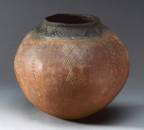




18,000 b.
18,000-10,000
Central Russian mammoth bone settlements
12,000 b.
12,000 Domestication of dogs
10,500-8000 Natufian settlements
10,000b.85 00 Domestication of sheep
8500-5000 Development of farming in the Middle East
12,000 b.
12,000 Domestication of dogs
10,500-8000 Natufian settlements
10,000b.85 00 Domestication of sheep
8500-5000 Development of farming in the Middle East
12,000 b.
12,000 Domestication of dogs
10,500-8000 Natufian settlements
10,000b.85 00 Domestication of sheep
8500-5000 Development of farming in the Middle East
8,000 b.
7500-6500
Domestication of pigs, goats, cattle
7000 Full-fledged town at Jericho
6250-5400 Çatal Huyuk at its peak
6,000 b.
5600 Beans domesticated
5000-2000 Yangshao culture in North China
5000 Domestication of maize (corn)
4,000 b.
4000-3000 Age of innovation in the Middle East: Introduction of writing, metalworking, the wheel, and the plow.
3500 Llama domesticated
3500-2350 Civilization of Sumer
c. 3100 Rise of Egyptian civilization
2500-1500Indus civilization in South Asia
2,000 b.
2000 Kotosh culture in Peru c.
1766 Emergence of Shang kingdom in China
1700 – 1300 Rise of village culture in Mesoa America
1000-500 Olmec civilization in Mesoamerica
400 Potatoes domesticated
7000–4000 Spread of agriculture through most of Middle East
5000 Farming along Nile River
4000 Sumerians settle in Tigris-Euphrates valley
2700–2200 Old Kingdom period
2600 First great pyramid
2400–2200 Akkadian empire conquers Sumer
2052–1786 Middle Kingdom period; civilization to Upper Nile
2000 Phoenician state
2000 Gilgamesh epic written
800 Babylonian empire; Hammurabi, 1796 –1750
1700 Hyksos invasion
1600 Minoan Civilization [Crete]
1600 Possible settlement of Jews in southeast Mediterranean
1575–1087 New Kingdom Period 1
1400–1200 Hittite empire; use of iron
1250 Moses and Jewish exodus from Egypt (traditional belief)
1100 Spread of use of iron
1000–970 Kingdom of Israel under King David
1000 Kush independent kingdom
1000 Indo-European invasion of Greece
1000 Spread of Phoenician settlements in western Mediterranean
800 Beginning of writing of Bible
730 Kushite rule of Egypt
721 Assyrian invasion conquers northern Israel
665–617 Assyrian empire
539 Persian empire
100 C.E. Decline of Kush and its capital Meroe
300 C.E. Rise of Axum [Ethiopia]
Southeast Asia Sites
A number of bronze drums, knowns as Dongson drums, usually in pairs, were found buried in several sites in Malaysia . These burials remain a mystery as most of them were chance finds with little or no archaeological data . The bronze drums were discovered in Kuala Terengganu, Ulu Tembeling, Kelang and Banting and are believed to have been brought from Northern Vietnam based on similarities in shape and motifs on the drum face between drums found there and those from local sites. The discovery of a pair of these drums at Kampung Sungai Lang in Banting, Selangor gave impetus to a new chapter in gathering data on Dongson drum burials as the site was systematically excavated. The find has since been classified as a symbolic burial for a personage of a high social status in his community. The excavation revealed that the Dongson drums were buried face down on a 2 meter long cengal hardwood plank believed to have been taken from an old boat. The whole of the drums were buried in earth piled up as a mound measuring about 5 meters at ground level and 1 meter at its peak. Then clay pots were also recovered, surrounding the drums. These were believed to have held food and water, while glass beads were also found scattered among the pots.
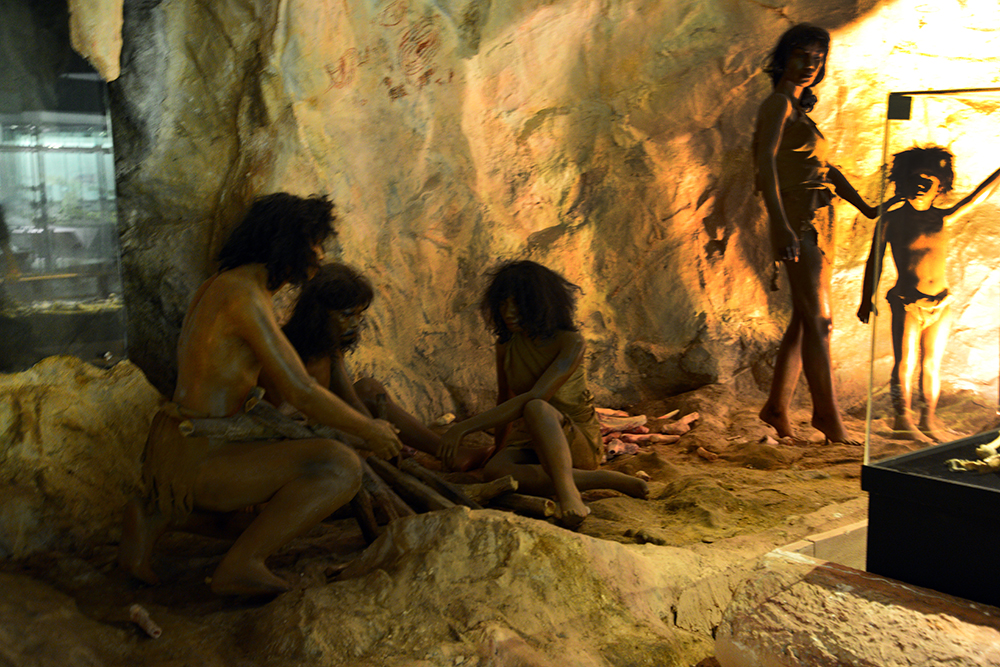




Early Languages Pictographs & Hieroglyphs
Writing Samples courtesy of Ancientscripts.com Copyright © 1996-2005, Lawrence Lo. All Rights Reserved
You can see from these early writing forms that these languages are 90% pictorial 80% geometry it appears that most forms resemble things found in nature and have been stylized (simplified) making them in most likelihood more universal and easy to reproduce. The development of a written language serves to catalog events in a civilization to communicate to the masses but the key here is communication & documentation. I believe that these early iterations of language operate on many levels one of the key factors here also relating to the early use of symbols we saw on the pottery on the previous pages is the use of symbols and how they relate to our own thinking process. Recent work in neurophysiology have put forth the idea that experiences are converted to symbols and processed by the brain with this in mind it is easy to conclude that it is our physical nature that dictates the use of symbols in culture. This makes it easy to see how there use became so entrenched so early on, and for so long.
As you can see there are many similarities in these Petroglyph. Even though they were found in different locations throughout the world. This seems to support the idea of the use of symbols, as a physical parameter for the process of thought itself. It is important to keep in mind that these early artist and shaman had a relationship to nature that bordered on maternal. It was widely held in many parts of the world that every action of men had repercussions to nature and the land. This ideal also had a relationship to the elements that where used to create objects this also became one of the founding principles around alchemy and early magic rituals. It follows to conclude that the common elements among us found daily in nature are those things we find pleasing or what we have come to term as (aesthetic). i.e
- Sun (yellow)
- Sky (blue, orange, violet, white, gray)
- Trees (green, red, white)
- Flowers (variegated colors)
- Water (aqua, turquoise)
- Animal Skins (leopard, giraffes, cows, mink)
- Rocks (variegated colors)
- Sand (variegated colors) etc…
- Gold
- Silver
- Bronze
- Lapis Lazuli
- Copper
- Cadmium
- Wax
- Cobalt
- Zinc
- Indigo
These elements each acquired there own importance over time some became associated with royalty and religious iconography. What’s more important to take note of is the relationship of these elements and how they are used in works of art i.e. (The sun or natural light may be illustrated in religious works by using gold leaf the reflection of Gods light by the physical reflection of gold. )
The birth of the metropolis
Most historians’ look to Egypt, Rome and Greece as the foundation of planning and the development of urban architecture, paved roads, monuments, and cathedrals. Artist defined these early civilizations as to providing a distinct style to the cultures they embodied; this distinction was attributed to societal beliefs and religious ideologies. This impled that artist at this time were beholden to their patrons pharos, emperors, kings and priest. Although Egypt by far is well known for its great cities starting as far back as 5000 BCE Mesopotamia has been credited as the birth of civilization. And looking at some of the pictures below you can see how incredibly advanced the architecture was as far back as 3500 BCE. Babylon was the largest city in the known world at the time. We have observed that most cities although from slightly different time periods have displayed extraordinary advances in architecture. Again this style of design was only used for building palaces and temples, but it not only heightened the cultural status but contributed as well to the moral of the people living in these cities giving them an tremendous sense of accomplishment.
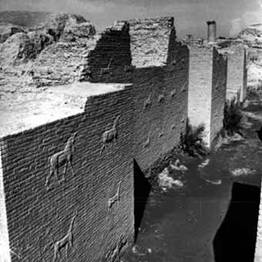
Hulton Deutsch Ruins of Babylon The ancient city of Babylon, located east of the Euphrates River near present-day Baghdad, developed in stages and reached its peak of expansion during the Neo-Babylonian dynasty under Nebuchadnezzar II. The city was the capital of a kingdom encompassing a large part of southwest Asia and was the largest city in the known world. Microsoft ® Encarta ® Encyclopedia 200
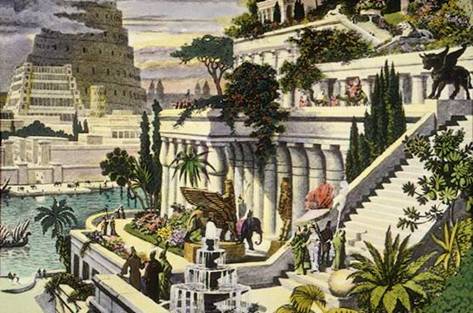
THE BETTMANN ARCHIVE Hanging Gardens of Babylon This hand-colored engraving by 16th century Dutch artist Maarten van Heemskerck depicts the Hanging Gardens of Babylon, one of the Seven Wonders of the World. Technically, the gardens did not hang, but grew on the roofs and terraces of the royal palace in Babylon. Nebuchadnezzar II, the Chaldean king, probably built the gardens in about 600 B.C. as a consolation to his Median wife who missed the natural surroundings of her homeland. Microsoft ® Encarta ® Encyclopedia 2002..
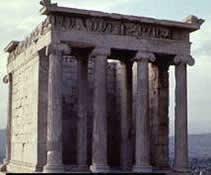
The Temple of Athena Nike is part of the Acropolis in the city of Athens in Greece. Built around 420 BCE, Microsoft® Encarta® Encyclopedia 2002. ©
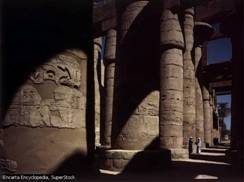
Temple of Amon at Karnak The hypostyle hall at the Temple of Amon in Karnak, Egypt, has more than 100 columns, each more than 20 m (70 ft.) high. The hall was built during the reign of Ramses II in the 1200s bc.Microsoft® Encarta® Encyclopedia 2002. © 1993-2001

Scala/Art Resource, NY Basilica of Maxentius This Roman basilica was begun by the emperor Maxentius between 307 and 310 and completed by Constantine the Great after 312. The quality and scope of the architecture was outstanding for its time. Microsoft ® Encarta ® Encyclopedia 2002.
It would appear that the early work of artist were to create structures that would inspire an almost spiritual presence. Quite often writing or pictures would also adorn the facades and columns sometimes depicting everyday events or describing historical or religious ideologies. By using this scale the creators introduce a new idea into these monumental works that is a mixture of metaphor coupled with design & function. This is important to note because art and the role of artist in society widen to create other disciplines we see less decorative works and more utilitarian and functional objectivity. It was not unusual for artist to work in teams to create these extraordinary wonders and the masters were the overseers.


Indus Valley Civilization In the Indus valley area now known as Pakistan, an advanced Bronze Age culture rose up about 2500 B.C. and lasted for nearly 1000 years. Scholars do not know how it began or whether its people were related to those who now occupy Southwest Asia. Nomadic tribes called Aryans invaded the Indus River valley, probably from the region north of the Caspian Sea, in 1500 B.C. The Aryan culture became dominant in the area, eclipsing that of its predecessors. Microsoft ® Encarta ® Encyclopedia 2002.
As early as 500 BCE artist began to maintain individual reputations for particular excellence in a field of artistry. There was a kind of early renaissance in art around this time starting in Greece and widening to neighboring civilizations. There began an appreciation for the art of art so to speak this probably came about from the organization of society and the education of its inhabitants. Although noble’s and emperors enjoyed the better of this new cultural awareness society also marveled at the ability of the artist and they took pride in their achievements as reflecting positively on society as a hole. It is in these early tracing of history we find the foundation of fine art and its power to unite and enrich society. With the birth of this new ideal also came the birth of an internal and engaging dialogue among philosophers, artist, poets, musicians, writers etc… One that would last to this day and eventually set the foundations for art throughout the world. This is the primary journey that I will investigate and in doing so explain some of the disparities and awe that come as acknowledged baggage to this extraordinary life for those engaged in the act of creation. This ideal was in part establishing standards for the arts as society became more intellectually advanced so did their sensibilities; the evolution of painting and sculpture strove to become more naturalistic architecture also became more refined and set a standard in design
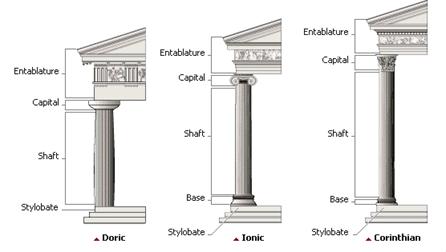
Early Greek
Greek Architectural Orders The ancient Greeks developed three major architectural styles, or orders, that determined the major features of a temple facade. The Doric is the oldest and simplest order. The Ionic and Corinthian orders added a base to the column and developed a more elaborate scheme for the column’s capital. The entablature (above the columns) also differs in each order. The Greeks where among the first cultures to consciously evolve their art as attitudes in society changed. As one looks at these works below you can see starting from the Archaic period the stiff stylization of an early Kore (Young Woman) these works depicted more of an ideal rather than specific individuals. Another early view of the conscious use of symbolism socially accepted at the time. As we move into early Classical we a shift to more naturalistic depiction of form coupled with the power of emotion.
» Alcamenes (circa late 5th century B.C.)
» Exekias (circa 550-525 B.C.)
» Lysippus (circa 4th century B.C.)
» Myron (circa 490-430 B.C.)
» Phidias (circa 490-430bc)
» Polyclitus (circa 450-420 B.C.)
» Polygnotus (circa 470 and 450 B.C.)
» Praxiteles (circa 390?-330?B.C.)
» Scopas (circa 395-350 B.C.)
» Zeuxis (circa 4th century B.C.)

Archaic

Early Classical

Late Classical

Hellenistic
The line in these works represents a beautiful use of geometry forming expressive special tensions. Moving into late classical we see the continued simplification of line and naturalistic posture, and quiet grace. The Greeks captured and idealized proportions and essentially set the bar for high art during this period. As society came under different rules and other cultures started to occupy the city the artist strove to incorporate other subject matter to accommodate a widening cultural diversity. Although these icons broadened there emotional range did as well it sought to capture death, old age, portraiture, any subject that could express the range of human emotion naturalistically. This is a vital shift in art for many reasons the first being that of conscious interpretation of life itself by creating

Egyptian
.

Greek
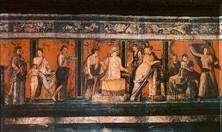
Pompeii

Pompeii
Use of geometry in painting
Use of geometry in Islamic painting
Intricate braided and interlaced patterns, called plaits are found in late Roman art in many parts of Europe, in mosaic floors and other media. Coptic manuscripts and textiles of 5th- and 6th-century Christian Egypt are decorated with broad-strand ribbon interlace ornament bearing a “striking resemblance” to the earliest types of knotwork found in the Insular art manuscripts of the British Isles. The Petronas like other major architecture found in South Eastern Asia countries uses geometry found in the creation of religious manuscripts. Malaysia is considered a Muslim/Islamist state so major architectural works such as the Petronas must conform to this belief. Designs and patterns of the entrance halls’ foyer reflect traditional handicrafts and ‘songket’, or weaving. In addition, the wall panels and screens are also inspired by hardwood carvings from the East Coast of Peninsular Malaysia. The floor designs are based on intricate patterns of pandan weaving and bertam palm wall matting.
Western Religious Symbols

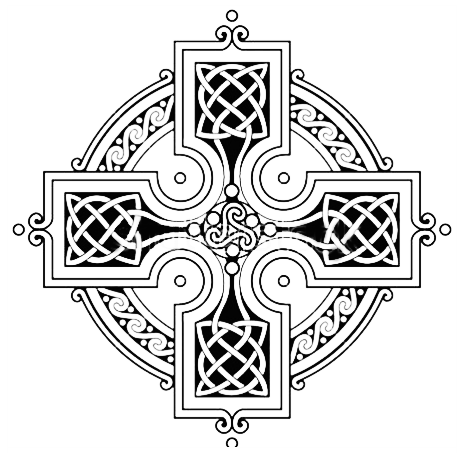
Hindu Chakra Symbols
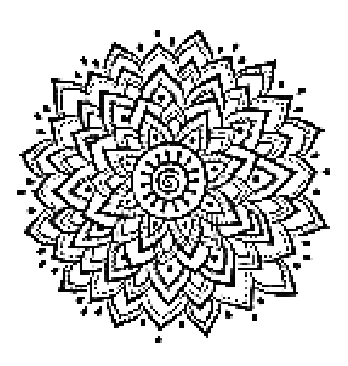
Sahasrara
Also known as the crown chakra located at the top of the head. Its function is understanding. It’s inner state is bliss. Its color is violet. Its planet is Uranus. Its stone is amethyst. Its meditation is: I understand Balancing this chakra is said to give vitality to the cerebrum and affects the development of psychic abilities. Energies: air, meditative, intuition, promotes thought.

Ajna
Located in the center of the forehead above the eyebrows. Its function is seeing, intuiting It’s inner state is I know. Its color is indigo and it’s planet Jupiter. Its stone is lolite. Its meditation is I see. Balancing this chakra helps psychic perception and balances the pineal gland. Energies: air, intuition, meditative, promotes thought.
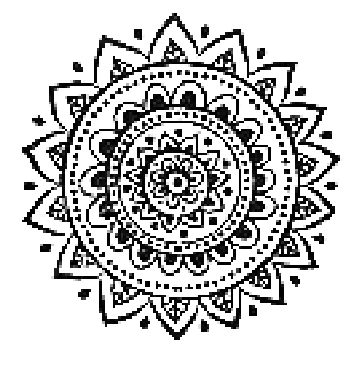
Visuddha
located in the throat Its function is communication creativity. Its inner state is synthesis of ideas into symbols. Its color is bright blue and its planets Mercury and Neptune. Its stones are: sodaline, blue lace agate, lapis lazuli, meditation on: I speak.Balancing this chakra is important for the speech communication centers the brain. Energies: water, calming, soothing, and relaxing.
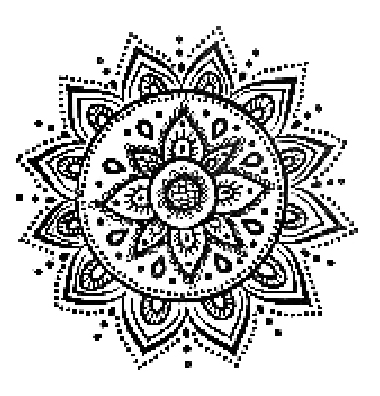
Anahata
Heart chakra located in the center of the chest. Its Function is: love. its inner state is compassion love, its color-is green and its planet is Venus. Its stones are: green/pink Rose quartz. Meditation on: I love. Balancing this chakra is important for the circulatory system, heart and thymus. It also affects spiritual love, compassion and universal oneness. Energies: Water, calming, soothing, relaxing.
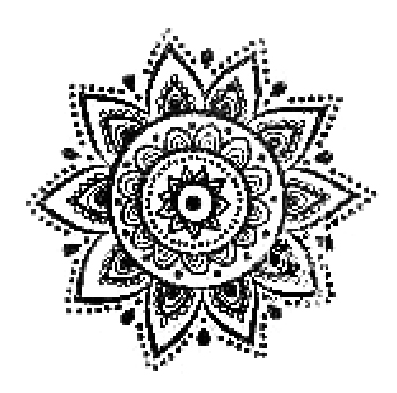
Muladhara
Solar Plexus chakra located in the area above the naval area. Its function is will. power, its inner state is laughter, joy, anger, its color is yellow. and its planets are Mars and Sun. Its stones are: Amber Topaz and Citrine. Meditation on: I do. Balancing this chakra is associated with calming emotions and frustration. easing, tension and helping to better utilize intuition. Energies: fire, charging, lends energy.

Svadisthana
Navel/Sacral chakra located in the lower abdomen, genitals, womb, its function is desire, sexuality, pleasure, procreation. Its inner state is tears its color is orange and its celestial body is the moon. Its stones are coral and carnelian. Meditation on I feel. Balancing this chakra is associated with sexual vitality, physical power and fertility. Energies: fire, charging.

Manipura
Root/support chakra located at the base of the spine. It’s function is survival and grounding. Its inner state is stillness and stability. It’s color is red and its planets are earth and saturn. Its stones are garner, ruby, onyx and obsidian. Meditation on I am Balancing this chakra gives energy to the physical body control fear increases overall health and helps in grounding. Energies: earth, grounding, focusing and centering.
Geometry, the body and temple design
The Hindu temple architecture reflects a synthesis of arts, the ideals of dharma, beliefs, values and the way of life cherished under Hinduism. It is a link between man, deities, and the Universal Purusa in a sacred space. In ancient Indian texts, a temple is a place for Tirtha – pilgrimage. It is a sacred site whose ambience and design attempts to symbolically condense the ideal tenets of Hindu way of life. All the cosmic elements that create and celebrate life in Hindu pantheon, are present in a Hindu temple – from fire to water, from images of nature to deities, from the feminine to the masculine, from kama to artha, from the fleeting sounds and incense smells to Purusha – the eternal nothingness yet universality – is part of a Hindu temple architecture. The architectural principles of Hindu temples in India are described in Shilpa Shastras and Vastu Sastras. The Hindu culture has encouraged aesthetic independence to its temple builders, and its architects have sometimes exercised considerable flexibility in creative expression by adopting other perfect geometries and mathematical principles in Mandir construction to express the Hindu way of life.

Cathedral of Santiago de Compostela, Spain.

Temple design
